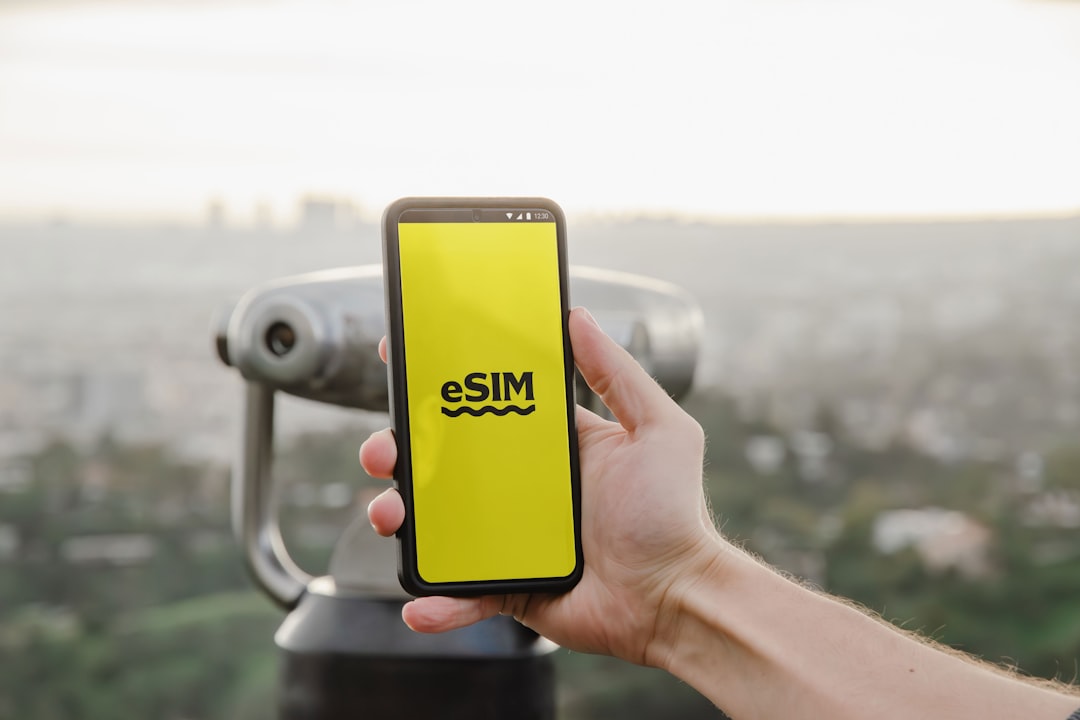Mexico Visa Guide for Digital Nomads

Overview
Mexico has become a magnet for remote workers looking for a blend of culture, sunshine, and affordable living. The country offers several pathways for digital nomads to stay legally for months at a time while they work from cafés in Oaxaca, coworking spaces in Mexico City, or beachfront villas in Playa del Carmen. This guide walks you through every step of the visa process, from choosing the right visa type to extending your stay and staying compliant with Mexican tax rules.
Why Mexico Is Ideal for Remote Work
- Cost of living – Daily expenses are considerably lower than in most North American and European cities. A comfortable lifestyle can be maintained on a modest budget.
- Time zone alignment – Mexico shares several time zones with the United States and Canada, making it easy to schedule meetings with clients or employers in North America.
- Infrastructure – Major cities and tourist hubs have reliable high‑speed internet, numerous coworking spaces, and a growing community of fellow digital nomads.
- Culture and travel – From ancient ruins to world‑class cuisine, Mexico offers endless opportunities for exploration during your downtime.
Visa Options for Digital Nomads
Tourist Visa (FMM)
The most common entry route is the Forma Migratoria Multiple (FMM), often called a tourist permit. It is issued on arrival at any international airport or land border. The FMM allows stays of up to 180 days per visit. While it does not explicitly permit “working remotely,” the Mexican government generally tolerates remote work that does not involve local labor markets, as long as you are not employed by a Mexican company.
Temporary Resident Visa
If you plan to stay longer than 180 days or want a more stable legal status, the Temporary Resident Visa is the preferred option. It is valid for one year and can be renewed for up to three additional years. After four consecutive years, you may apply for permanent residency.
Digital Nomad Specific Visa (Pending)
Mexico is in the process of formalising a dedicated Digital Nomad Visa. While the legislation is still being finalised, the temporary resident route already covers most remote‑work scenarios. Keep an eye on official announcements for any new streamlined procedures.
Determining Which Visa Is Right for You
| Situation | Recommended Visa | Typical Stay |
|---|---|---|
| Short‑term visit, under six months, no plans to open a local bank account | Tourist FMM | Up to 180 days |
| Planning to live in Mexico for a year or more, need a work‑friendly status | Temporary Resident | One year, renewable |
| Uncertain about length of stay, want flexibility to leave and re‑enter | Tourist FMM with multiple entries, combined with later temporary residency if needed | Up to 180 days per entry |
If you anticipate staying beyond six months, start the temporary resident application while you are still in the country on your FMM. Mexican immigration permits you to begin the process before your tourist permit expires.
Eligibility Requirements for the Temporary Resident Visa
- Proof of financial means – You must demonstrate that you have sufficient income or savings to support yourself without relying on Mexican public funds. The threshold is usually US$2,500 per month in regular income, or a bank balance of roughly US$45,000.
- Valid passport – Your passport must be valid for at least six months beyond the date you intend to enter Mexico.
- Clean criminal record – A background check from your home country (or the country where you have lived the longest in the past three years) is required.
- Purpose of stay – You must be able to explain that you will be working remotely for a foreign employer or as a freelancer serving clients outside Mexico.
Required Documents
Below is a checklist of the core documents you will need to submit. Always verify the latest list with the nearest Mexican consulate, as requirements can vary slightly by jurisdiction.
- Passport copy – Both the identification page and any pages showing previous visas or stamps.
- Passport‑size photos – Two recent photos on a white background, 4 × 6 cm.
- Tourist FMM copy – If you are applying from within Mexico, include a copy of your current FMM.
- Financial proof – Recent bank statements (last three months), proof of regular income (pay slips, freelance contracts, or tax returns).
- Letter of employment or freelance agreement – A brief statement from your client or employer confirming that you will continue working remotely for them while residing in Mexico.
- Criminal background certificate – Official document issued by the appropriate authority in your country of residence.
- Proof of address in Mexico (optional but helpful) – Rental agreement, hotel reservation, or a letter of invitation from a host.
All documents that are not in Spanish must be accompanied by a certified translation. Some consulates accept notarised English copies, but a professional translation reduces the risk of delays.
Application Process Step by Step
Step 1 – Gather Documentation
Start by collecting every item on the checklist. Request your background check early; processing times can range from a few days to several weeks depending on the issuing country.
Step 2 – Choose Where to Apply
- From abroad – Apply at the Mexican consulate or embassy that serves your residence.
- From within Mexico – Visit the Instituto Nacional de Migración (INM) office in the city where you will reside. You will need to present your FMM and the same set of documents.
Step 3 – Pay the Visa Fee
Fees differ by nationality and by the number of years you request. As of the latest update, the fee for a one‑year temporary resident visa is roughly USD 250. Payment can usually be made by cash, credit card, or bank transfer, depending on the consulate.
Step 4 – Submit the Application
Present the complete dossier to the consular officer or INM clerk. The officer will verify the documents, ask a few questions about your remote work, and may request additional proof of income.
Step 5 – Wait for Approval
Processing time varies. Consular applications from the United States, Canada, and Europe typically take 5‑10 business days. Applications submitted in Mexico can be processed within 48‑72 hours if all paperwork is in order.
Step 6 – Collect Your Visa
If approved, you will receive a temporary resident visa sticker in your passport. In Mexico, you will later need to exchange this for a temporary resident card at the local INM office within 30 days of entry.
Step 7 – Register Your Card
The temporary resident card is a plastic ID that includes your photograph, visa type, and expiration date. Keep it with you at all times, as it serves as proof of legal status.
Extending Your Stay
The temporary resident visa can be renewed annually for up to four years. To renew, you must return to the INM office before your current card expires. The renewal process mirrors the initial application: you will need updated financial statements, a fresh background check (if required), and the renewal fee (generally lower than the first‑time fee).
If you have completed four consecutive years of temporary residency, you become eligible to apply for permanent residency. This status removes the need for yearly renewals and grants you the same rights as Mexican citizens in terms of employment, property ownership, and access to public services.
Working Remotely While on a Tourist Visa
Many digital nomads begin their Mexican adventure on a tourist FMM and continue to work remotely for several months. While this is technically permissible, keep the following best practices in mind:
- Do not engage with Mexican clients – Working for a local company could be interpreted as illegal employment.
- Avoid public employment advertisements – Posting job listings on local platforms may raise red flags.
- Maintain foreign income – Ensure that all payments are deposited into a non‑Mexican bank account.
If your remote work situation changes and you start receiving income from Mexican sources, you must switch to a temporary resident visa or a work permit.
Tax Considerations
Residency for Tax Purposes
Mexico determines tax residency based on physical presence. If you spend more than 183 days in the country within a 12‑month period, you become a tax resident and are required to file a Mexican tax return.
Income Tax
Mexican residents are taxed on worldwide income at progressive rates ranging from 1.92 % to 35 %. However, Mexico has tax treaties with many countries to avoid double taxation. Check the treaty between Mexico and your home country to understand credits or exemptions that may apply.
Filing Obligations
- Annual tax return – Due by April 30 for the previous calendar year.
- Monthly informational filings – If you have Mexican bank accounts or receive payments in Mexico, you may need to submit additional declarations.
Practical Tips
- Keep thorough records of all foreign income and expenses.
- Consider consulting a cross‑border tax specialist early in your stay.
- If you plan to stay less than 183 days, you can generally remain a non‑resident for tax purposes, simplifying compliance.
Health Insurance
Mexico does not require health insurance for tourists or temporary residents, but having coverage is strongly advised. Options include:
- International travel insurance – Provides emergency medical coverage and evacuation. Suitable for stays up to six months.
- Mexican private health plans – Companies such as AXA, Seguros Atlas, and GNP offer plans for expatriates with affordable premiums.
- Public health system (IMSS) – Temporary residents can enroll in the Mexican Social Security Institute for a modest monthly fee, gaining access to public hospitals and clinics.
Choose a plan that covers telemedicine, as many digital nomads rely on virtual consultations.
Safety and Practical Tips
- Stay informed – Follow local news and register with your embassy’s travel alert system.
- Secure your belongings – Use lockable luggage and consider a safe at your accommodation.
- Know the emergency numbers – 911 works throughout Mexico for police, fire, and medical emergencies.
- Respect local customs – Politeness and basic Spanish phrases go a long way in building trust with locals.
Cost of Living Snapshot
| City | Monthly Rent (1‑bedroom) | Average Utilities | Internet (30 Mbps) | Food & Groceries |
|---|---|---|---|---|
| Mexico City | $800‑$1,200 | $60‑$80 | $30‑$40 | $300‑$450 |
| Playa del Carmen | $700‑$1,000 | $50‑$70 | $30‑$40 | $250‑$400 |
| Oaxaca | $500‑$800 | $40‑$60 | $25‑$35 | $200‑$350 |
| Tulum | $900‑$1,400 | $60‑$80 | $30‑$40 | $300‑$500 |
These figures are averages for mid‑range accommodations and do not include entertainment, travel, or premium services.
Frequently Asked Questions
Can I work for a US company while on a tourist visa?
Yes, as long as the work is performed remotely and you are paid into a non‑Mexican account.
Do I need a work permit to freelance for clients worldwide?
No, a work permit is only required if you provide services to Mexican entities or receive payment in Mexico.
What happens if I overstay my FMM?
Overstaying can result in a fine, a ban on re‑entry for a period, or a requirement to leave the country immediately. Always apply for an extension or switch to a temporary resident visa before the expiration date.
Is a Mexican bank account necessary?
It is not mandatory, but having a local account simplifies paying for rent, utilities, and other recurring expenses.
Can I bring my pet with me?
Yes, but you will need a health certificate, vaccination records, and an import permit from the Mexican agricultural authority.
How long does the permanent residency process take?
After four years of temporary residency, the permanent residency application can be processed within a few weeks, provided all documentation is complete.
Resources and Useful Links
- Instituto Nacional de Migración (INM) – Official site for immigration procedures and office locations.
- Mexican Consulates – Find the nearest consulate for visa applications and document authentication.
- Tax Treaty Database – Check the existence and details of tax treaties between Mexico and your home country.
- Nomad List – Mexico – Community‑generated data on cost of living, internet speeds, and coworking spaces.
- Expats Mexico Forum – A place to ask specific questions and share experiences with other remote workers.
Final Thoughts
Mexico offers a compelling mix of lifestyle, affordability, and legal pathways that make it a top destination for digital nomads. By understanding the visa options, preparing the required documentation, and staying compliant with tax and immigration rules, you can enjoy a seamless remote‑working experience in a country rich with history and natural beauty.
Whether you choose a short‑term tourist stay or commit to a multi‑year residency, the steps outlined in this guide will help you navigate the process with confidence. Pack your laptop, embrace the vibrant culture, and let Mexico become your next remote‑work haven.
Random Posts

Mastering Remote Work with Proven Productivity Tools
Learn the top productivity tools for remote work and how to blend them into a seamless system that boosts focus, organization, and collaboration, so you thrive, not just survive, wherever you work.
2 months ago

How To Start A Nomad Lifestyle With Confidence
Learn how to launch a confident nomad lifestyle with clear steps: define your why, plan finances, streamline packing, set up remote work, and thrive on the road.
3 weeks ago

Mastering Remote Work Productivity and Finding Top Digital Nomad Jobs
Unlock the secrets to thriving remotely with proven productivity frameworks, essential tools, and step by step tactics to land top digital nomad jobs and boost your freedom focused career.
2 weeks ago

Mastering Remote Work with Essential Productivity and Communication Tools
Learn how the right mix of productivity and communication tools can turn remote work challenges into seamless collaboration, boosting focus, teamwork, and results for freelancers, startups, and enterprises.
3 weeks ago

Avoiding Common Tax Pitfalls as a World Wanderer
Learn how to travel the globe without tax surprises. This guide reveals the top residency traps, filing deadlines and simple steps to stay compliant, so your wanderlust stays stress free.
2 months ago
Latest Posts

Essential Software Every Remote Professional Should Use
Master remote work with essential tools: instant messaging like Slack, high definition video calls such as Zoom, and asynchronous voice apps. Streamline communication, stay connected and boost productivity.
1 day ago

Mastering Remote Work Productivity for Digital Nomads and Freelancers
Learn proven habits, tools, and tactics that help digital nomads and freelancers stay focused, deliver quality work, and maintain a sustainable lifestyle while traveling the world.
1 day ago

Tech‑Friendly European Towns Perfect for Remote Living
Discover Europe’s best small towns where fast internet, affordable living and vibrant tech communities let you work remotely while soaking up historic charm, lakeside views or mountain air.
1 day ago